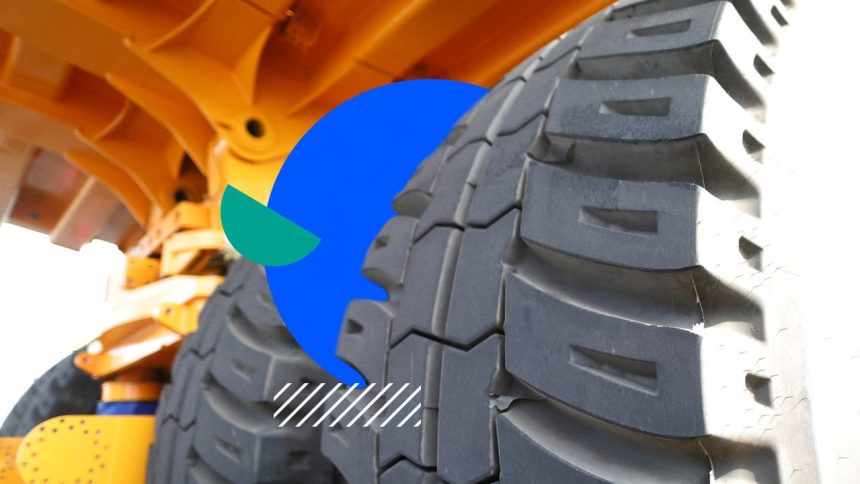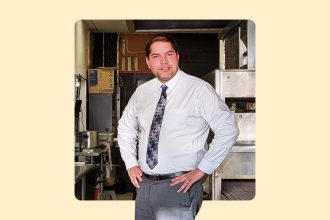Key takeaways
- Equipment loans may have specialized terms and loan amounts over traditional business loans.
- Equipment leases can be a capital lease or an operating lease.
- You may need at least two years in business and $100,000 in annual revenue to qualify for an equipment loan or lease.
Access to the right equipment may be essential to your business’s growth. However, buying it outright can be costly, especially for newer businesses or those with limited capital. Whether you need office technology, semi-trucks, tractors or heavy machinery, the upfront expense can be a major barrier.
While general business loans can help, exploring equipment leasing vs financing can help you secure essential tools for your business without a large upfront investment. Getting an equipment loan allows you to purchase equipment over time and eventually own it, while equipment leasing offers lower monthly payments and flexibility if you plan to upgrade frequently.
Understanding the differences between equipment leasing and financing can help you choose the best option for your budget, cash flow and long-term goals.
Equipment leasing vs. financing
Both leasing and financing give your business access to the equipment it needs to function. A lease works as a rental agreement and generally has a lower month-to-month cost.
Equipment financing is a type of business loan that typically costs more monthly than a lease but may result in paying less overall. This is because you own the equipment outright once the loan is paid off. Depending on the type of lease you sign, your business may lose access to the equipment you need and any residual value that equipment may still have.
Here are some of the key differences between equipment leasing and financing:
| Equipment leasing | Equipment financing | |
| Payment structure |
Lower rental payments for a set lease term, usually 24 to 60 months |
Larger loan payments over a fixed term, usually up to 10 years |
|
APR |
Leases often don’t disclose APR, but is usually higher than financing | Usually between 4-34%, depending on credit and terms |
| Ownership | Lessor owns the equipment and may offer a purchase option at the end of the lease | You own the equipment after the loan is fully paid off |
|
Upfront costs |
Typically minimal or no upfront cost | Usually requires a 10-20% down payment |
| Maintenance responsibility |
Usually included in the lease agreement> |
You’re responsible for maintenance and repairs |
| Tax benefits | Lease payments are usually not tax deductible | May qualify for Section 179 equipment cost deduction and depreciation deductions |
| Best for | Business needing short-term use or frequent upgrades |
Businesses looking for long-term ownership of equipment |
Both are valid options for business owners. Just keep in mind how you plan to use the equipment and what it will cost to keep and maintain it each month.
What is equipment leasing?
Equipment leasing is what gives you access to much-needed equipment without the higher monthly cost associated with a loan. In many cases, your business can also avoid a down payment, saving you thousands.
It is a common choice for businesses that don’t have the capital to purchase a piece of equipment outright or afford a down payment. Depending on the type of lease, you will either rent and return the equipment or purchase it with a balloon payment at the end of the lease period.
Either way, you will make monthly payments toward the equipment as you use it. You may be responsible for maintenance and other taxes, but overall, it is considered a less expensive option when compared to equipment financing.
Types of leases
There are two primary lease options available to businesses: capital and operating.
- Capital lease: A capital lease allows you to purchase the equipment at the end of the lease period. You pay insurance and taxes on the equipment, maintain it and can count it as a liability. At the end of the lease, you can buy the equipment. This may result in a balloon payment where you owe the remaining amount that wasn’t paid through the lease at once.
- Operating lease: An operating lease is a short-term rental agreement that functions like a consumer lease. You can cancel as needed and are generally not responsible for maintenance. However, you may not be able to buy the equipment at the end of the lease period and can’t count it as a liability for tax purposes.
The type of lease you agree to will depend on the company you work with, the equipment you need and the duration of the lease itself.
For example, a capital lease may be better if a larger piece of machinery is too expensive to purchase outright, but your business can afford to maintain and insure it. An operating lease is better suited for equipment that quickly becomes outdated.
Cost of equipment leasing
The cost of leasing equipment can vary widely depending on the type of equipment and lease you choose. You may also be responsible for a few common fees.
|
Fee |
Description |
|
Security deposit |
The security deposit acts as a guarantee that you will return the equipment in good condition. Otherwise, you forfeit the deposit. |
|
Insurance |
Your business may be required to insure any equipment it leases. While not a direct fee, it is an expense you should keep in mind when choosing a lease. |
|
Interest |
Interest costs vary widely depending on the type of lease and your business and personal finances. |
|
Late fees |
Charged for late or missed payments. |
|
Interim rent |
If you take possession of the equipment before the start of the lease billing period, you may have to pay a prorated amount for the duration of that period. |
|
Taxes |
You may be responsible for paying taxes on the equipment if you choose a capital lease. |
Pros and cons of equipment leasing
Pros
- Ability to stay up to date on the latest industry tech
- More affordable monthly payments
- Typically no down payment
Cons
- Balloon payment to buy out a capital lease
- Lose residual value and equity of equipment
- Unable to write depreciation off on taxes
What is equipment financing?
Equipment financing, also known as equipment loans, is the process of borrowing money to pay for a piece of equipment or machinery. They are especially handy for equipment your business will need for years to come. If it is unlikely to become obsolete or unrepairable, a loan allows you to own the equipment outright. Once you do, you can use or sell it. Many businesses prefer an equipment loan to a small business loan because the equipment acts as collateral, which may result in better terms.
After you receive the funds, manage your equipment loan wisely. Late payments can cause fees to rack up and could potentially impact your credit. Since the monthly payment on an equipment loan is generally higher than on a lease, you may need to carefully control your cash flow to make your payments in full.
Where to get an equipment loan
You can find equipment loans through various sources, including banks and alternative lenders. Equipment loans may also be available directly through the seller, though it depends on the type of equipment you are purchasing and the size of the seller.
Some of the best equipment business loans are alternative lenders because of their speed and minimal requirements. For instance, iBusiness Funding (formerly Funding Circle) has a low revenue requirement for business owners, and many other top lenders only require a minimum personal credit score of 600.
Equipment loans from banks may come with stricter qualifying criteria, but might also command more competitive interest rates. Established businesses with good monthly and annual revenue should look into these, as well as SBA loans, to get the best terms.
Cost of equipment financing
Like most business loans, several common fees are associated with the cost of financing equipment.
| Fee | Description |
| Down payment | While not a fee, you may be expected to make a down payment on the equipment. This can be anywhere from 10 percent to 20 percent of the total equipment value. |
| Origination fee | An origination fee is the general cost of borrowing a loan. Though the exact amount depends on the lender, some charge fees up to 5 percent of the total loan amount. |
| Appraisal fee | For large pieces of equipment that need an in-person appraisal, a lender may require you to pay an appraisal fee to secure the loan. |
| Late payment fee | Charged for late or missed payments. |
| Non-sufficient funds fee | Charged when there is not enough money to cover the monthly payment cost. |
| Prepayment penalty |
Charged for early payments or earlier payoff to recoup lost interest on a loan. |
Pros and cons of equipment financing
Pros
- Ability to sell the asset
- Deduct loan payments and depreciation from taxes
- Own equipment at the end of loan
Cons
- Down payment required
- Higher monthly cost
- Risk of outdated or obsolete equipment
Requirements for equipment leasing and financing
Leasing and financing equipment have similar requirements for approval. To get an equipment loan, you can expect to show proof of:
- At least two years in business
- Personal credit score in the good to excellent range
- Annual revenue of $100,000 or more
To lease a piece of equipment, you may also need to meet a minimum amount — some equipment is too inexpensive to lease. Other qualifications vary, and many lenders will require you to exceed the minimum eligibility requirements to score the lowest rates on the best loan or lease. It’s best to be prepared with the documents needed to get an equipment loan, such as bank statements and tax returns, to expedite the application process.
Bottom line
Both leasing and financing equipment are useful ways to get your business the equipment it needs. Leasing is one of the top alternatives to equipment loans because it has a generally lower monthly cost. But you lose out on any equity the equipment may have. If you don’t want to go the equipment financing route, a startup loan may be a way to pay for your new assets.
Ultimately, the right choice will depend on your business and the type of equipment you plan to use. Long-lasting machinery may be better funded with a loan, while a lease may be better for tech that sees frequent updates. Consider overall cost and end-of-loan or end-of-lease scenarios when making your decision.
Frequently asked questions
Read the full article here














